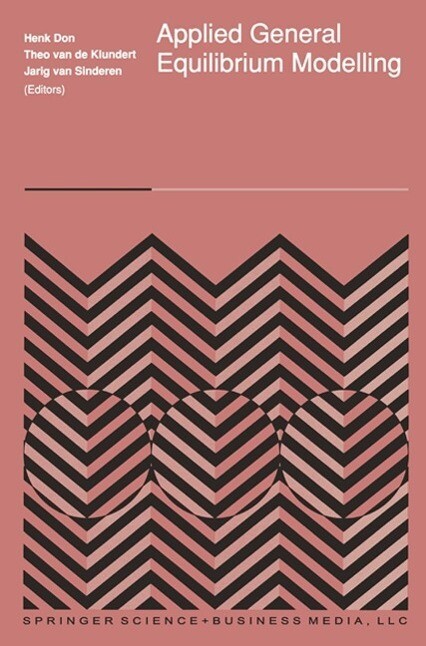Over the last decade or so, applied general equilibrium models have rapidly become a major tool for policy advice on issues regarding allocation and efficiency, most notably taxes and tariffs. This reflects the power of the general equilibrium approach to allocative questions and the capability of today's applied models to come up with realistic answers. However, it by no means implies that the theoretical, practical and empirical problems faced by researchers in applied modelling have all been solved in a satisfactory way. Rather, a promising field of research has been opened up, inviting theorists and practitioners to further explore and exploit its potential. The state of the art in applied general equilibrium modelling is reflected in this volume. The introductory Chapter (Part I) evaluates the use of economic modelling to address policy questions, and discusses the advantages and disadvantages of applied general equilibrium models. Three substantive issues are dealt with in Chapters 2-8: Tax Reform and Capital (Part II), Intertemporal Aspects and Expectations (Part III), and Taxes and the Labour Market (Part IV). While all parts contain results relevant for economic policy, it is clear that theory and applications for these areas are in different stages of development. We hope that this book will bring inspiration, insight and information to researchers, students and policy advisors.
Inhaltsverzeichnis
1. Introduction. - 2. Applications of General Equilibrium Models to the 1986 Tax Reform Act in the United States. - 3. Tax Reform, Capital Allocation and Welfare Gains in Norway. - 4. Introducing Intertemporal and Open Economy Features in Applied General Equilibrium Models. - 5. On the Approximation of Infinite Horizon Allocations. - 6. Towards an Analysis of Tax Effects on Labour Market and Allocation, A Micro/Macro Approach. - 7. The Effects on Unemployment of Reducing Social Security Contributions: A General Equilibrium Analysis for Belgium. - 8. Excess Demand in the Keller Model.













